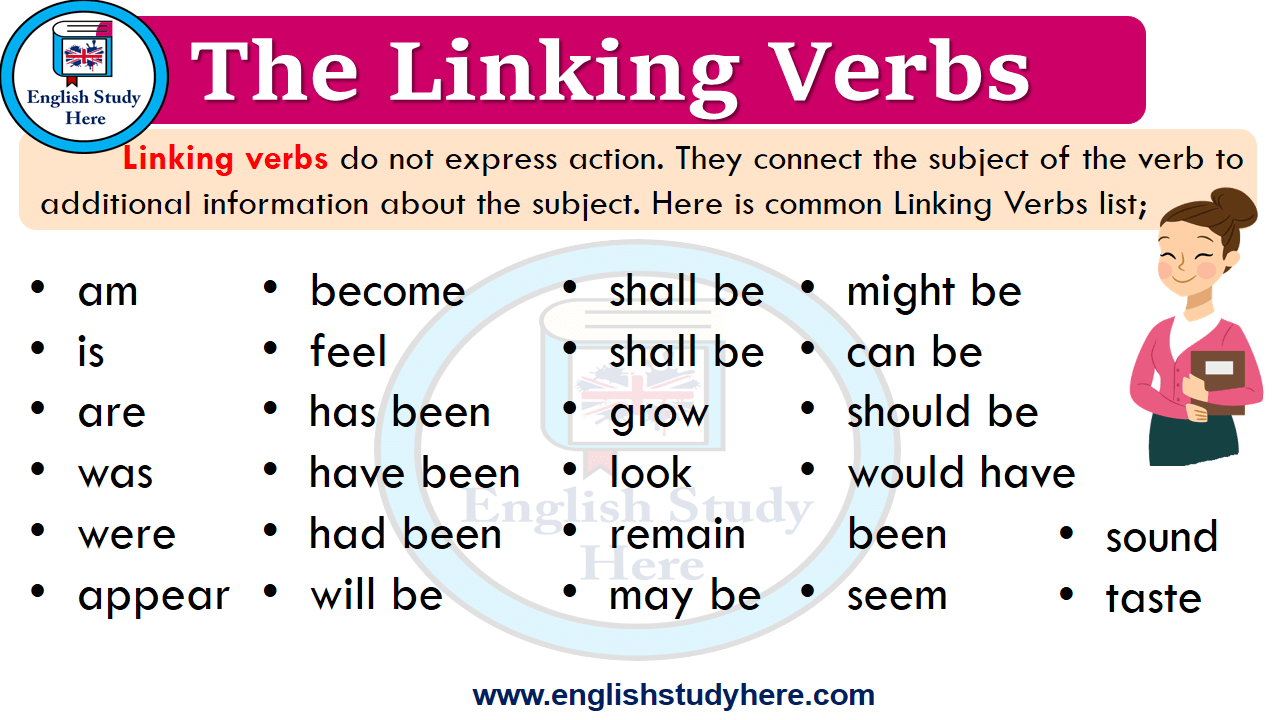
The Linking Verbs English Study Here
Auxiliary verbs (also called helping verbs) are used along with a main verb to express tense, mood, or voice. For example, in the statement 'it is raining', 'is' functions as an auxiliary verb indicating that the action of the main verb ('raining') is ongoing.

Auxiliary Verb Definition, List and Examples of Auxiliary Verbs • 7ESL
An auxiliary verb is used with a main verb to help express the main verb's tense, mood, or voice. For example (auxiliary verbs highlighted, main verbs in bold): Tense. The tense of a verb tells us when the action took place. Sally was eating the cake. Mood. The mood of a verb tells us how it is to be regarded (e.g., as a fact, a command, a wish).

"No Prep Auxiliary and Linking Verb Practice for Spring" includes 6 is/are/am worksheets and 6
Auxiliary verbs help other verbs by adding tense, mood, voice, or modality. Linking verbs do not do either of these things; instead, they provide a connection or "link" between the subject of the sentence and a noun or adjective that describes or identifies that subject.
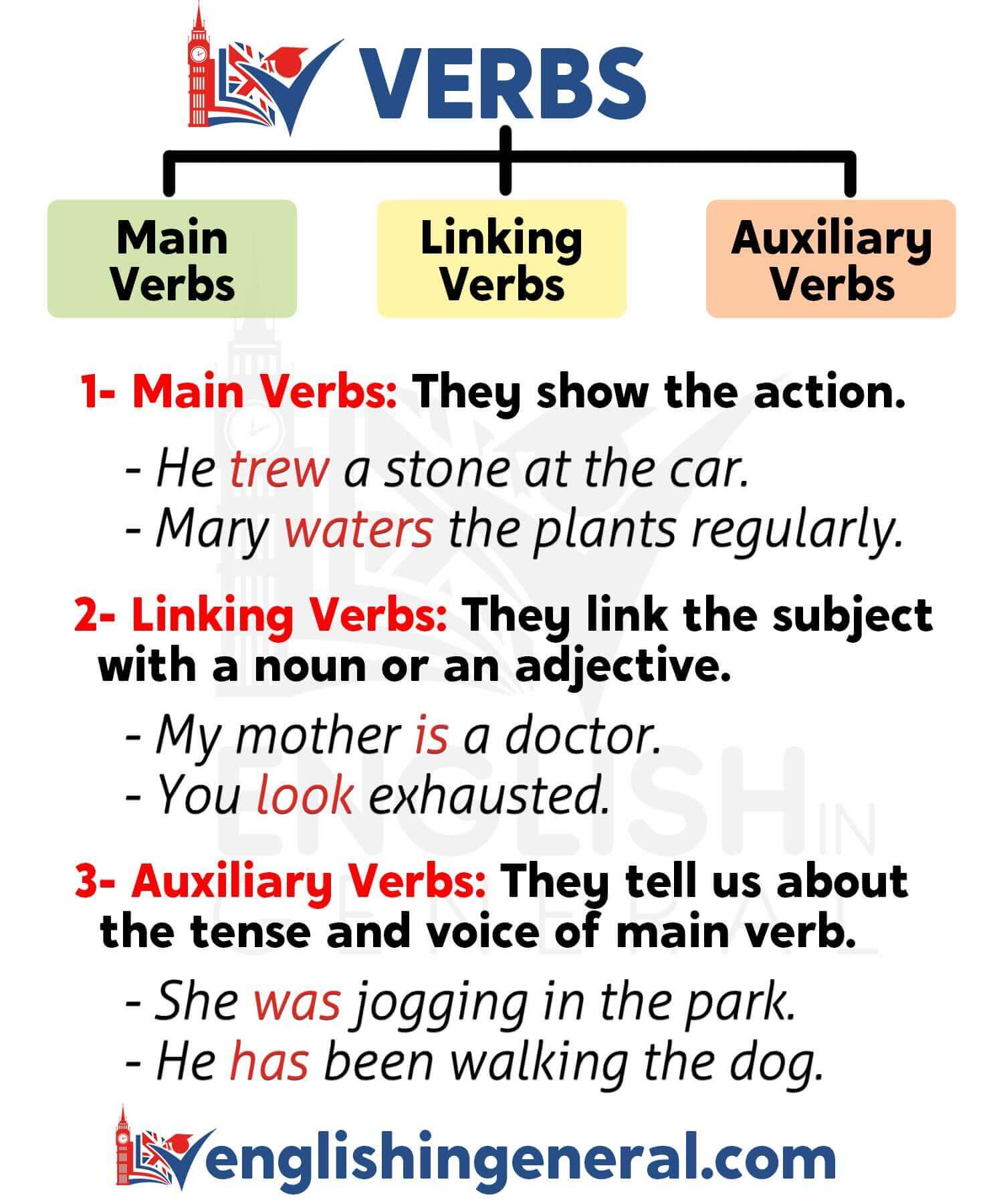
Verbs in English Grammar Lessons English in General
What Is an Auxiliary Verb? | Examples, Definition & List What Is a Regular Verb? | List, Examples & Definition What Is a Verb? | Definition, Examples & Types What Is Simple Present Tense? | Examples, Use & Exercises What Is a Participial Phrase?│Definition & Examples What Is a Transitive Verb? | Examples, Definition & Quiz
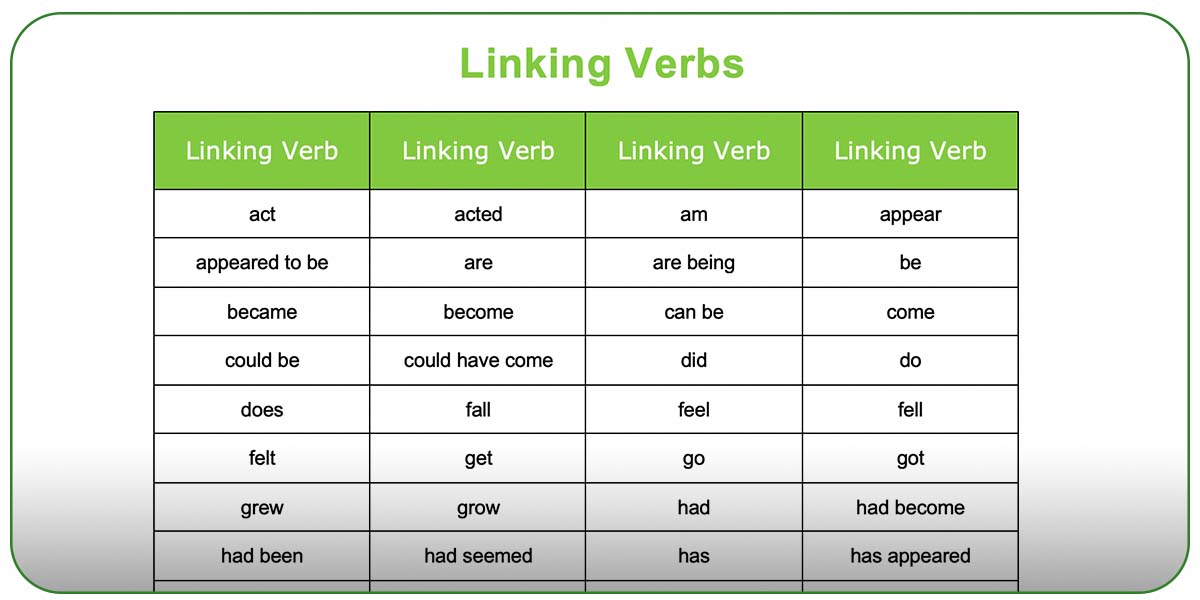
Mastering Linking Verbs Your Complete Guide in 2023
Auxiliary verbs are verbs used alongside the main verb to change its tense, mood, or voice (e.g., "is" in "he is walking").

Auxiliary Verbs English Study Here
Study examples of auxiliary verbs and action vs. linking verbs. Updated: 11/21/2023 Table of Contents What is a Verb? Action and Linking Verbs Understanding Action Verbs Exploring.

Auxiliary Verbs Understanding Their Function in English Grammar English Study Online
Auxiliary verbs are copulative verbs like is/are, was/were etc. that form a verb phrase. Like I am writing now. am writing forms a verb phrase. it made it like a sub-verb agreement and here am is functioning like a main verb. Hope it works. Answer link Good question Linking verbs are limited.
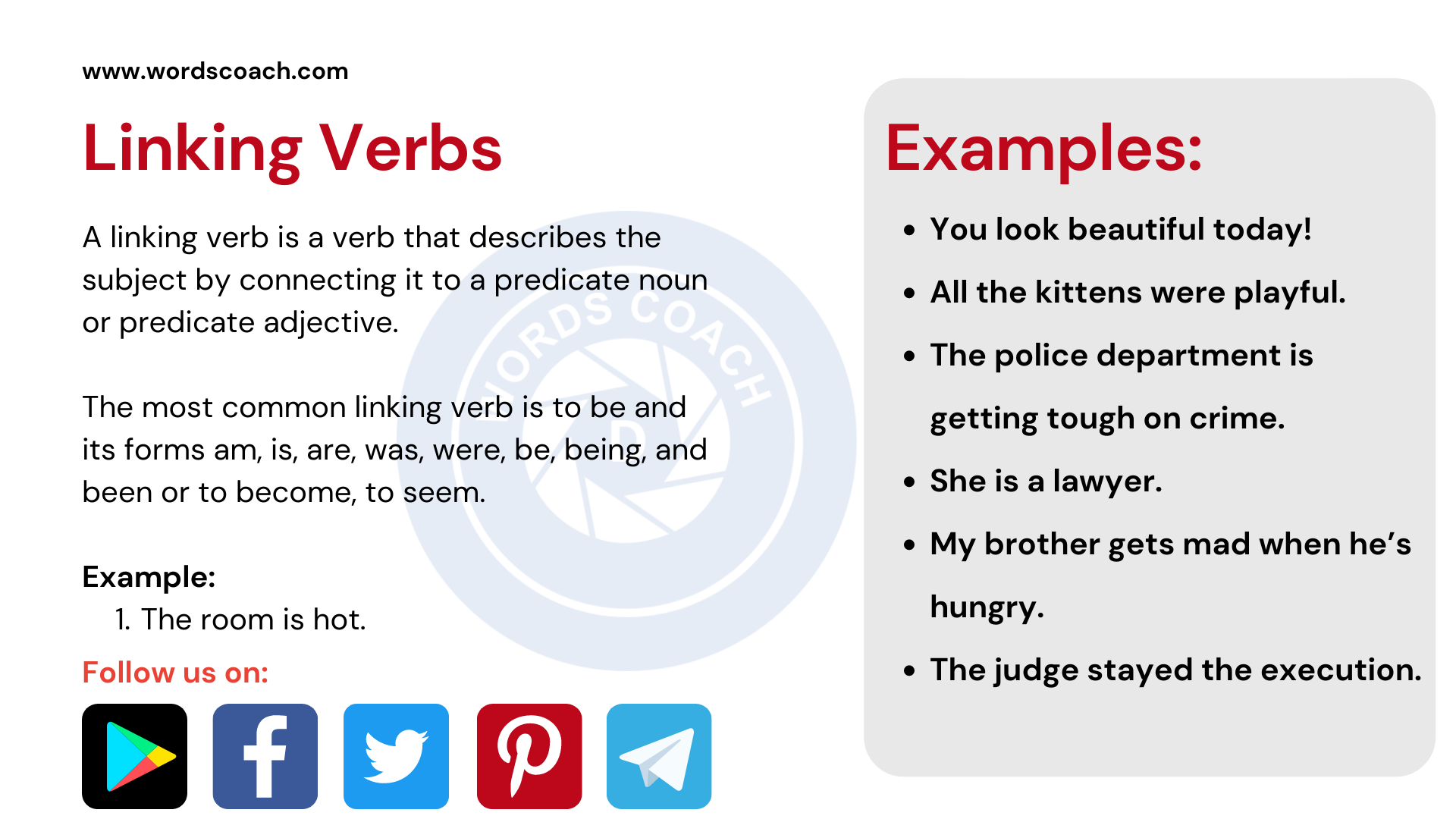
Linking Verbs Chart
Auxiliary verbs (also called helping verbs) are used along with a main verb to express tense, mood, or voice. For example, in the statement "it is raining," "is" functions as an auxiliary verb indicating that the action of the main verb ("raining") is ongoing. Auxiliary verbs are used in various verb tenses, including the continuous.

Linking Verbs 14 Common Linking Verbs with Example Sentences Lessons and Worksheets for ESL
Do 4 problems. Learn for free about math, art, computer programming, economics, physics, chemistry, biology, medicine, finance, history, and more. Khan Academy is a nonprofit with the mission of providing a free, world-class education for anyone, anywhere.
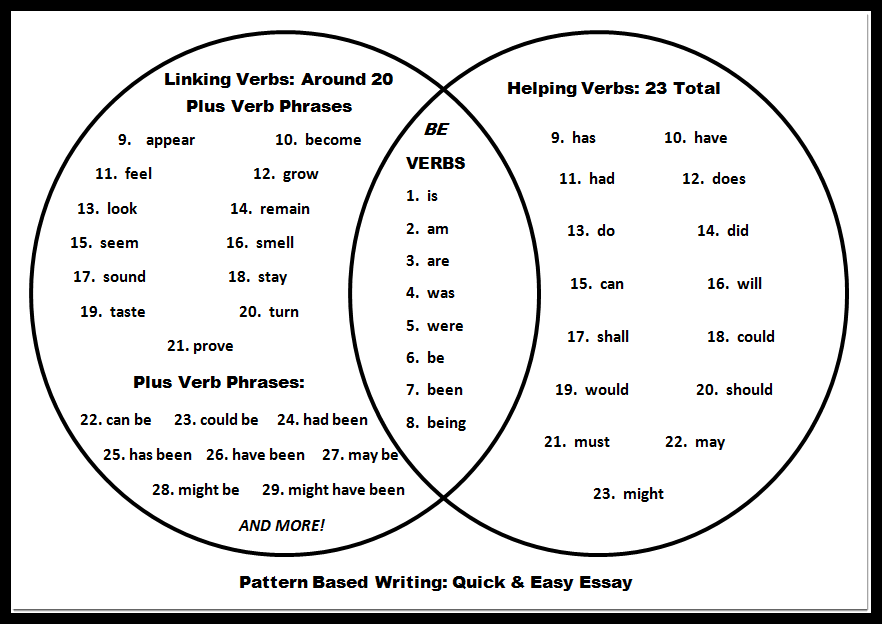
Helping Verbs List and Linking Verbs List Venn Diagram Teaching Writing Fast and Effectively!
A linking verb is a type of verb that connects the subject of a sentence to a noun, pronoun, or adjective that renames or describes the subject. Linking verbs do not show action, but instead, they show a state of being or a relationship between two things. The most common linking verbs in English are "be," "am," "is," "are.

What Is A Linking Verb? Linking Verbs List with Useful Examples Effortless English
Linking verbs are the main verbs in sentences and serve as links or bridges between subjects and their subject complements. Auxiliary verbs (or helping verbs), on the other hand, help or connect with other verbs to function grammatically. Auxiliary verbs are used together with verb tenses and their aspects.
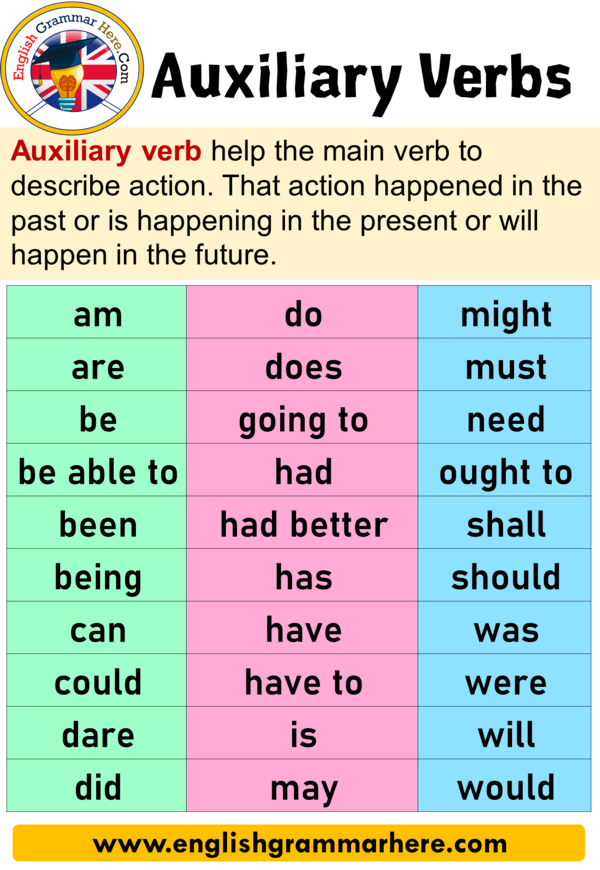
24 Auxiliary Verbs With Examples, Definition and Sentences English Grammar Here
Auxiliary verbs are a type of verb that takes a supportive role in a sentence, second to the main verb. They're used mainly to create complex grammatical tenses, like the perfect and continuous tenses, which show different aspects of time, or how long an action takes place. simple present (no auxiliary verbs): I go to the zoo. present continuous:

Modal Auxiliary Verbs English Grammar »
A linking verb (or copular verb) connects the subject of a sentence with a subject complement (i.e., a noun, pronoun, or adjective that renames or describes the subject). For example, in the statement "Max is excited," the verb "is" links the subject "Max" to the adjective "excited." Linking verbs are used to indicate conditions or states of being.

Linking Verbs 14 Common Linking Verbs with Example Sentences Love English Teaching Verbs
English Grammar Verbs Clause structure and verb patterns Link verbs Link verbs Level: elementary Some verbs are followed by either a noun or an adjective: She was a good friend. She was very happy. V + N V + Adj He became headmaster. He became angry. V + N V + Adj These verbs are called link verbs. Common verbs like this are: He looked hungry.
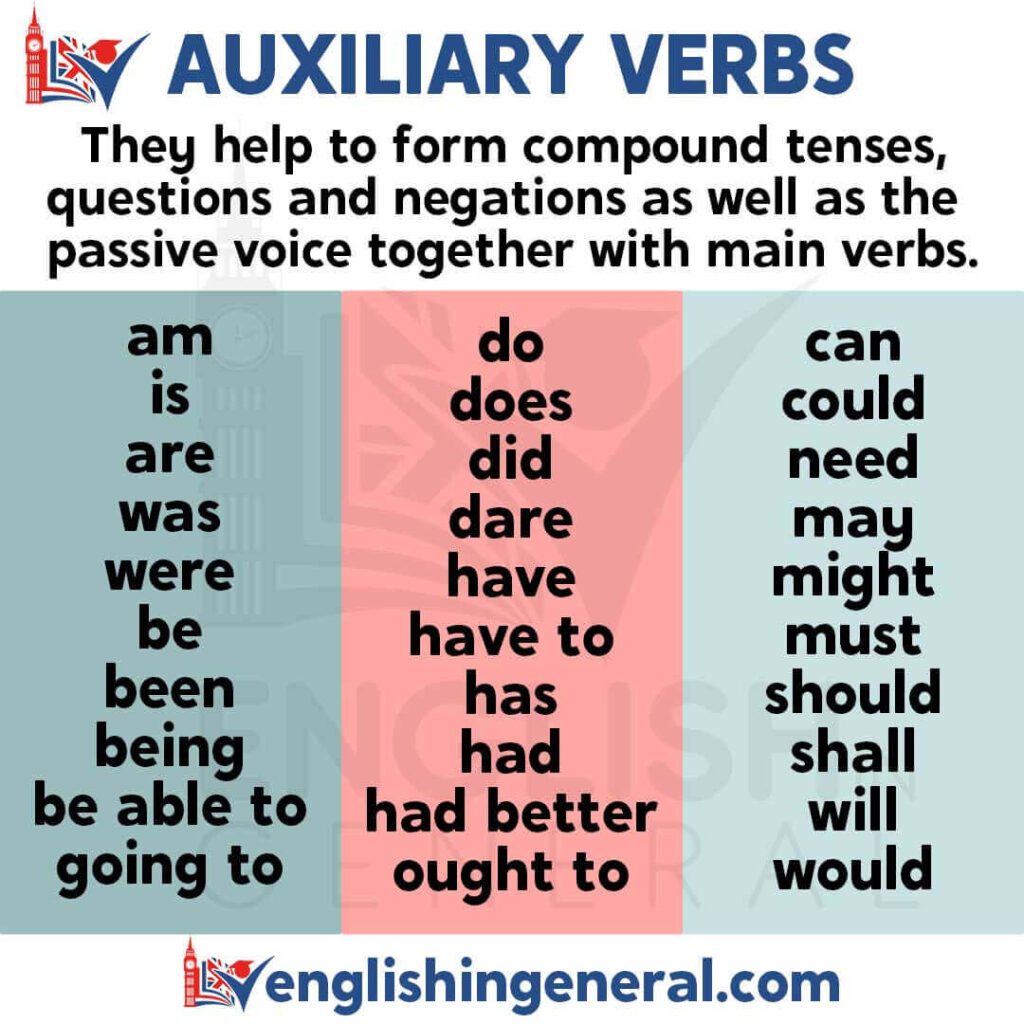
Auxiliary Verbs Grammar Lessons English in General
Action, linking, auxiliary and passive verbs are important to understand. Almost all verbs are either action or linking verbs. Auxiliary verbs are helping verbs and work alongside other verbs to help determine the relationship between the action and the subject. Passive verbs allow the subject to be the recipient of the action rather than the.
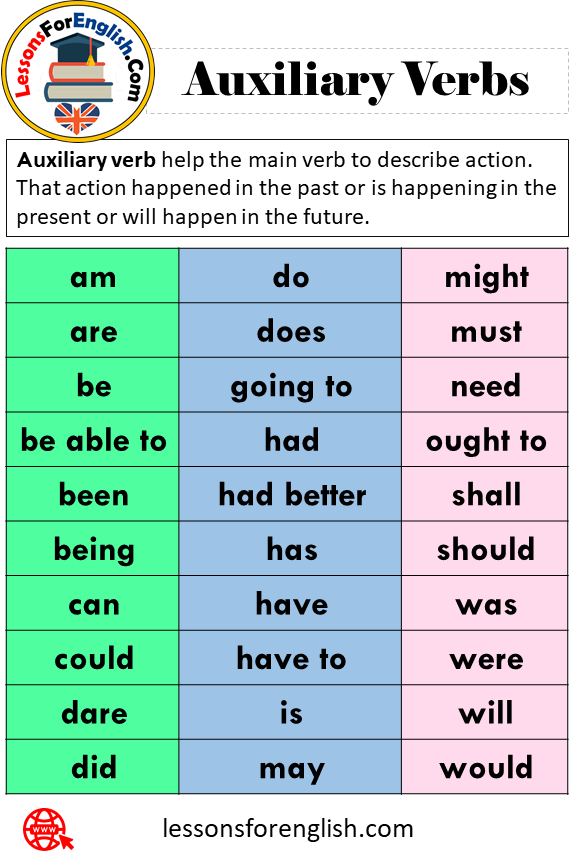
23 Modal Auxiliary Verbs and Example Sentences Lessons For English
According to traditional English grammar guides, a linking verb describes the subject by connecting it with the rest of a sentence. What's more, they can be a single word or a group of words. Unlike other verbs, this type of verb does not convey action. Instead, they describe or identify a subject.